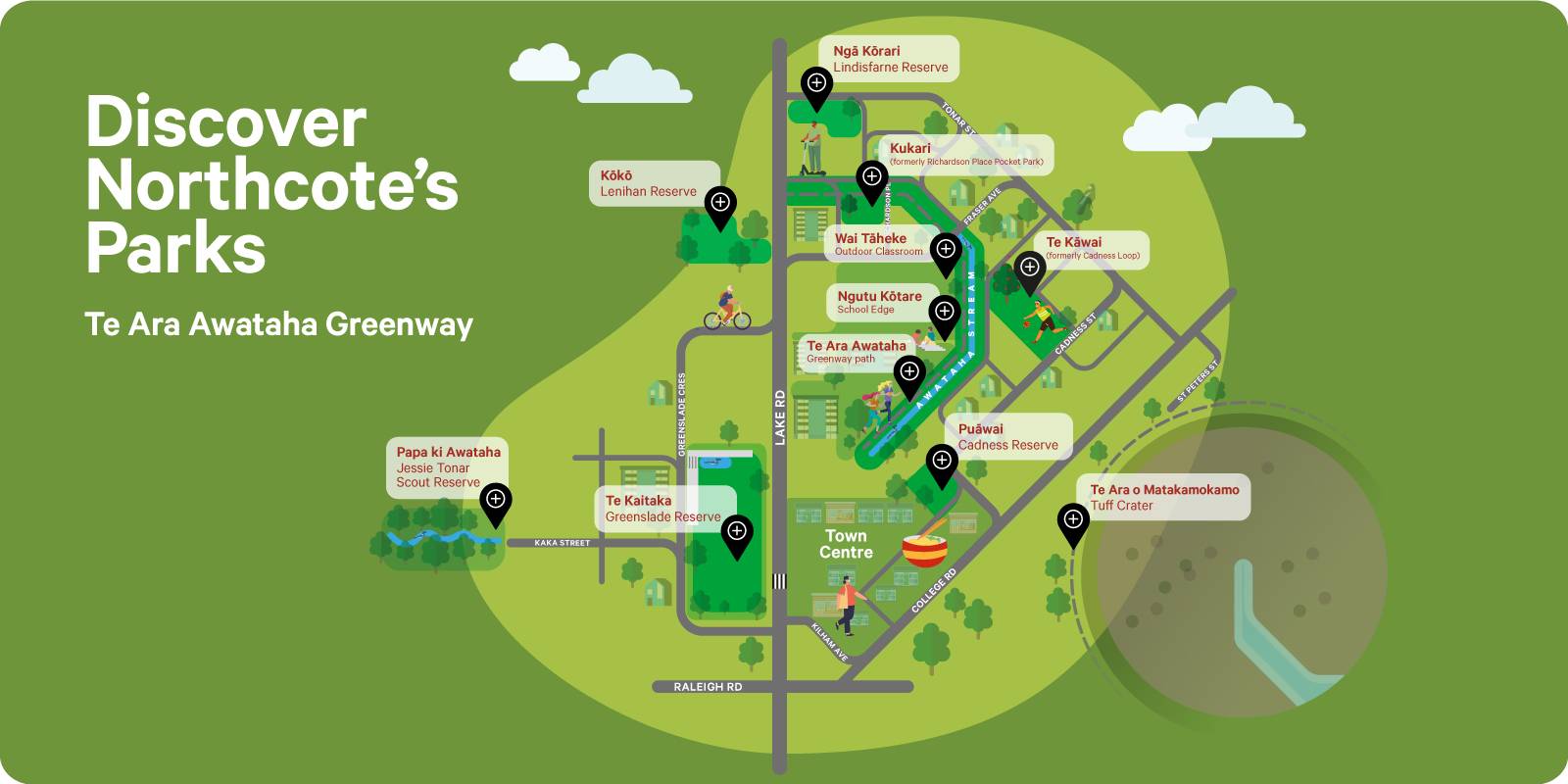The final pieces of a thriving natural environment in Northcote are “falling into place”.
Nine parks and one outdoor classroom in the neighbourhood will now carry Te Reo Māori names that reflect the area’s natural environment and cultural history.
The changes come as part of Te Kete Rukuruku, a culture and identity programme led by iwi in partnership with Auckland Council and Local Boards.
Many of the newly-named parks were built or redeveloped as part of Northcote Development, a partnership between various community groups and agencies including Kāinga Ora, Auckland Council, Healthy Waters and Eke Panuku.
“These new names and the stories behind them are the final pieces falling into place – they’re unique to Northcote, they celebrate its history, its journey, and they connect us with the natural environment,” says Claire Laybourne, Kāinga Ora Senior Development Manager.
“We’re extremely proud to be a part of that – alongside our partners, Kāinga Ora Northcote Development builds infrastructure, creates greenspace and rejuvenates our whenua. All of that then belongs to our communities, and this is a great example of a project growing into part of a local identity.”
The names and narratives for the Northcote sites were shared with Kaipātiki Local Board at a hui on 21 June 2023 before the board adopted them officially at its business meeting on 16 August 2023. The outdoor classroom and three of the parks will adopt sole Māori names and the remaining six parks will have dual Māori and English names.
“These names and the stories behind them really enrich Kaipātiki and give beautiful insights into the history and culture of our area,” says Danielle Grant, Kaipātiki Local Board Chair.
“On behalf of the whole board, I’d like to give a huge thank you to Ngāi Tai ki Tāmaki and Ngaati Whanaunga for sharing these names with Kaipātiki.”
DUAL NAMES
Puāwai/Cadness Reserve
Puāwai is a reference to the flowering and blossoming of the plants across Te Ara Awataha and how this resembles tamariki (children) as they grow up and learn.
Te Kaitaka/Greenslade Reserve
A kaitaka is a finely woven muka (flax fibre) cloak with tāniko (intricate geometric patterns). It is a prestigious style of traditional cloak. The use of this name here highlights the value and visibility of the awa (river) in this park. The awa represents the tāniko (borders) around the edge of the cloak with the open fields representing the cloak itself.
Papa ki Awataha/Jessie Tonar Scout Reserve
This park's name means ‘place at Awataha’.
Kōkō/Lenihan Reserve
Kōkō is another name for the tūī. This connects with the name for the nearby reserve named Kukari. It reflects the connection with the environmental improvements, and habitat restoration taking place allowing more native species to return to the area.
Ngā Kōrari/Lindisfarne Reserve
The name Kōrari is in reference to the flowering stalks and seed pods of the harakeke (flax).
Te Ara o Matakamokamo/Tuff Crater
This is an iteration of the original name for the water body this reserve circumnavigates, Te Kōpua a Matakamokamo. Te Ara o Matakamokamo (the path of Matakamokamo) acknowledges the tūrehu Matakamokamo in the creation of Te Kōpua a Matakamokamo.
SOLE TE REO MĀORI NAMES
Te Kāwai (formerly Cadness Loop)
This park's name is a reference to the reaching elongated shoots of the hue (gourd plant) and the traditional association of the kāwai, likening it to whakapapa in its expanse and reach.
Kukari (formerly Richardson Place Pocket Park)
Kukari is the Māori name for the fledglings of the kōkō (tūī). This name connects with not only the manu (birds) in the area but also references the many young children who come to play in this park.
Ngutu Kōtare (formerly School Edge)
Ngutu Kōtare means kingfisher beak. This is also the name of the Pouwhenua Manu, the carving that stands on the edge of the stream below the playground (see photo above). It is a kaitiaki (guardian) of Te Ara Awataha.
Wai Tāheke (formerly School Edge Outdoor Classroom)
Wai Tāheke means ‘descending waters’. This relates to the design features of the outdoor classroom shelter which has a carved figurehead situated on the guttering of the roofline. This carving guides fresh rainwater down from its mouth to the natural rock below. The water then flows across the pathway into Te Ara Awataha.
